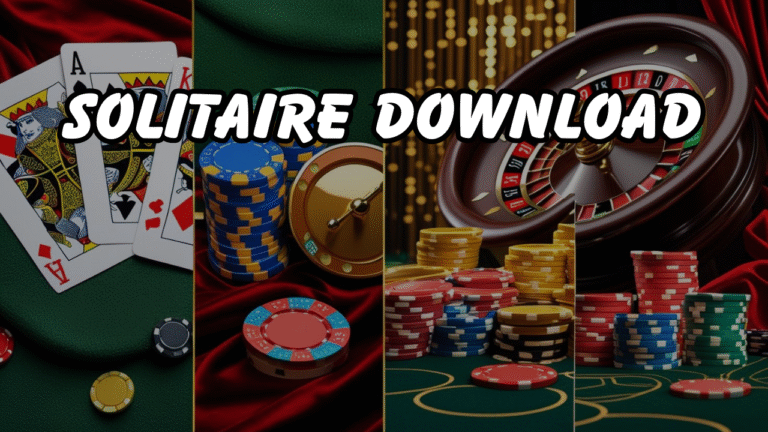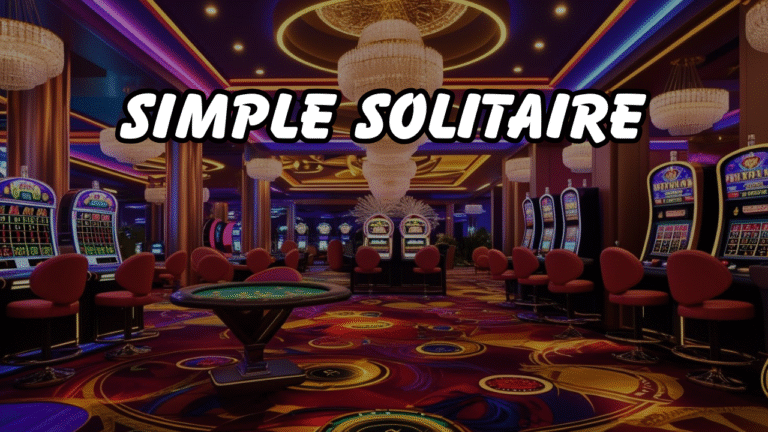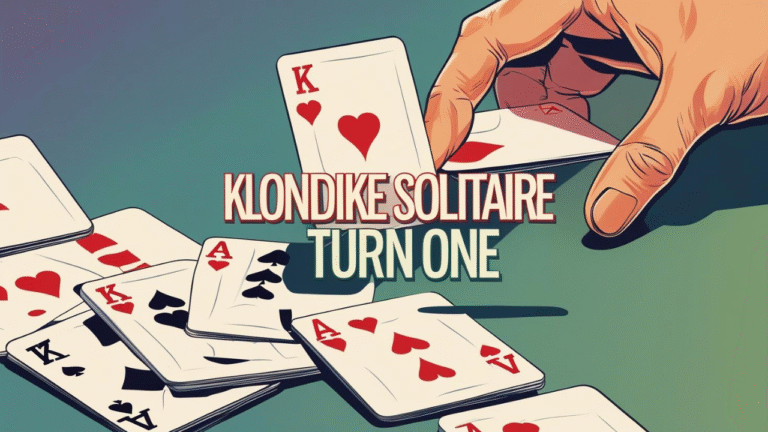A game that offers a solo challenge to sharpen focus and soothe the mind—master the art of calm and strategy with the Patience Card Game!
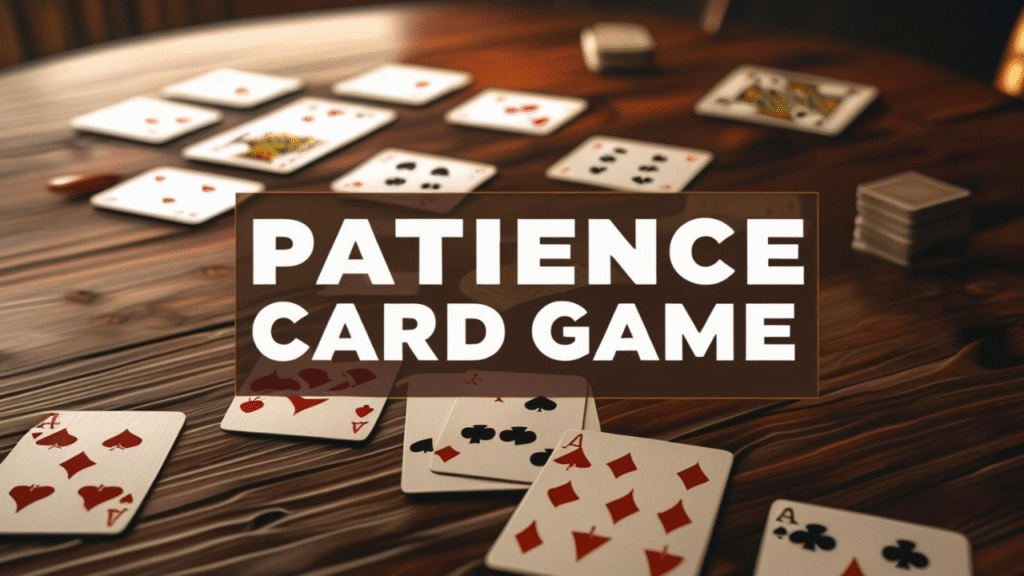
Introduction: The Various Applications of Patience Beyond a Gambit
As a tool for cognitive growth, mindfulness, and strategic thinking, the ancient card game Patience (also known as Solitaire) is underappreciated in this day of fast-paced computer games and rapid gratification. Despite its humble origins, Patience is a challenging game that puts your focus, memory, and ability to solve problems to the test.
Find out why Patience remains the world’s most widely played solo card game as this blog explains the game’s fundamentals, level of strategy, and psychological benefits. Whether you spend more or less time playing, growing your patience can have a profoundly positive impact on your concentration and self-discipline.
Tell Me About Patience, a Tarot Card Game.
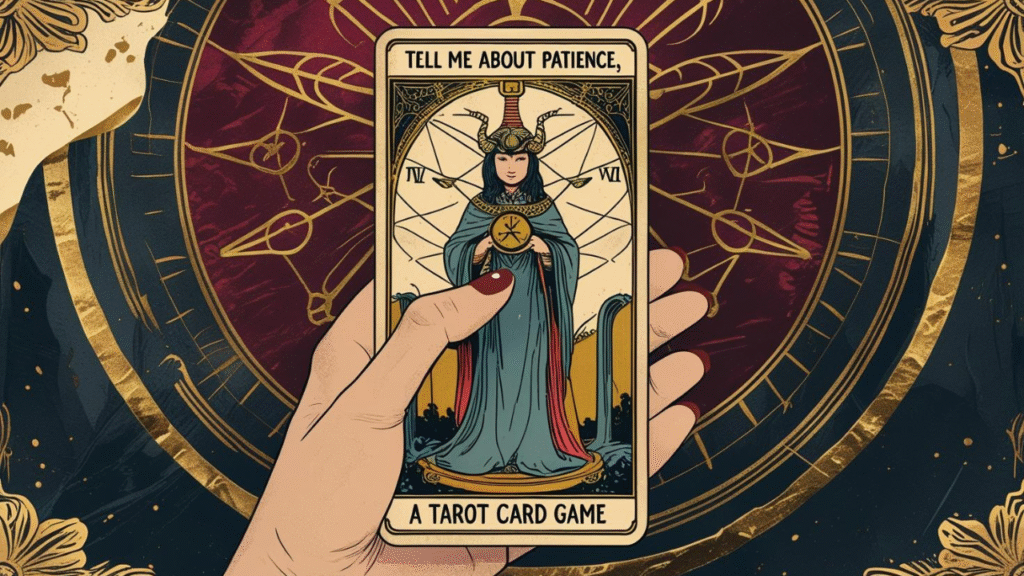
Played alone, the objective of the shuffled deck of cards in the game of Patience (sometimes called Solitaire) is to arrange them in a predetermined sequence, usually according to suit and rank. The basic goal of the game has not changed over the years, even though Klondike is by far the most played version: to strategically place cards from a tableau onto foundation piles according to established rules.
7 Positive Impacts of Playing classic patience card game
Improve Your Brainpower
Optimal brain function relies on strong short-term memory, pattern recognition, and sequencing abilities, all of which the game improves.
Fosters Focus and Persistence
Winning the game requires concentration and patience, as the name suggests, and it usually comes gradually.
Amplifies Strategic Intelligence
Using the layout of the cards, plays anticipate possible actions and make them a reality.
Reduces Stress and Promotes Mindfulness
Less anxiety and a calmer state of mind can be attained by the repetitive and hectic action in the game.
Improves Ability to Make Good Choices
The game is ideal for honing your skill in making quick choices since each move necessitates you making an essential choice, such as whether to move a card, hold, or start anew.
Promotes Self-Control and Patience
Sometimes, playing it safe yields better results than trying to make a grand spectacle of your move.
Boosts Self-Assurance by Acquiring Deep Knowledge
Players gain confidence and a sense of mastery as they progress through the game.
Instructions: 5 Easy Steps to Become a Patience Master (Klondike Version)
First Step: Prepare Tableau for Use
Begin by distributing seven individual stacks of cards to each player. The first has one card, the second has two, and the third has three, etc. Each is only dealt so that its top card is visible.
Second Step: Define Your Goals
The objective is to move the cards from ace to king onto one of four foundation piles, one for each suit.
Third, Obey All Rules Regarding the Move
You may place the cards in the tableau in reverse order and change their color while doing this. For filling vacant places in the tableau, only Kings can be used.
Step 4: Draw from the Rest of the Deck When you are allowed to do so, draw a card from the draw pile. In certain versions, you can turn over three cards simultaneously.
Fifth, Plan Ahead and Back Up When Necessary
Escape from a jam by reviewing your past moves. You can experiment with various plans using the move undo option, which is present in most computer versions. when you play play patience online free

Winning with Purpose: A Strategy and Analysis Guide and patience card game rules
In contrast to random-number-generating games, Patience promotes methodical reasoning and preparation. Top players approach the game with strategy, not reaction, always taking the time to study the tableau and shorter sequences, and thinking through the consequences of their moves.
Prioritizing card plays, knowing when to play hidden play patience online free and at what times to play in the tableau versus shifting one’s focus to foundation piles is, of course, a strategic component of playing. Time isn’t a measure of patience; it’s a measure of vision.
Game theory, as well as data from user platforms, such as Microsoft Solitaire Collection, indicate that good players win about 25% to 35% of the time in Klondike. The exact value depends on the drawing rules, namely 1-card to 3-card draw. As for the proportion of learned strategy to pure chance, one does not have to be a rocket scientist to know that this says it all.
Questions and Answers (FAQ)
Q1: Are Patience and Solitaire the same card games?
In Britain it is called Solitaire. Both of them are talking about the same deck of cards.
Q2: Is Patience more a game of luck?
No. The first shuffle of the cards determines where something good may happen by luck, but on the whole your more important skills would determine your success.
Q3: Can patience enhance cognitive capacity?
Yes. Concentration, memory, and decision-making are all improved by frequent play.
Q4: what is the most popular version of Patience?
Klondike is the game everybody knows and plays.
Q5: Is there a mobile app of Patience?
Yes, there are several paid and free versions for Windows, Android, and iOS; most of these versions offer daily challenges and performance statistics.
Lastly, Look at These Reasons Why Patience Is Essential
Playing theclassic patience card game is not only a pastime, but also an excellent mental stimulation that really tests your brain along with some tension relief and strategic skills. At this time when mental endurance and good thinking matter a lot, playing this type of game: meaningful and fully satisfying at the same time: should be your form of recreation as well as brain training.
Thus, whenever you find yourself with some time on your hands, play with shuffling a deck or opening the Solitaire app. Rather than just idly passing the time, you’ll be enhancing your mental powers.Would you be willing to have this content rewritten as an infographic, social media update, or downloadable manual?


